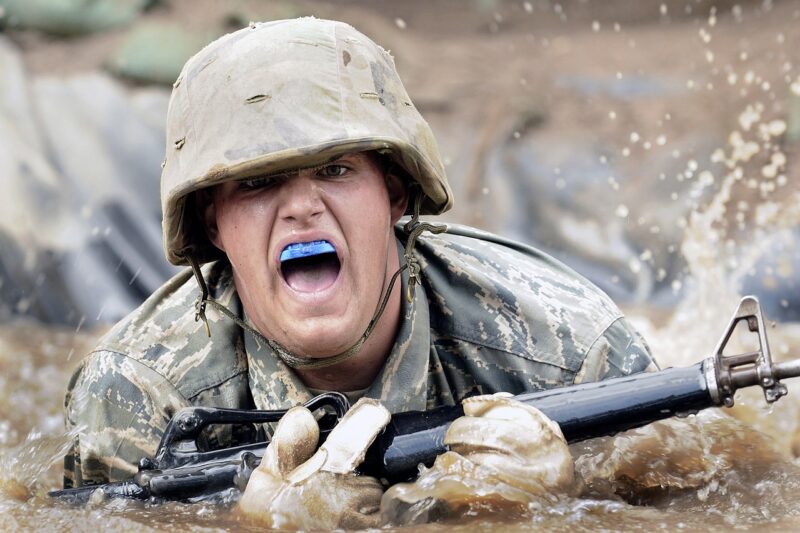Why Certain Firearms Are Only Available to Elite Military Units and SWAT Teams
November 11, 2024

In the world of firearms, not all weapons are created equal. Some firearms are designed and restricted for use only by elite military units and special law enforcement teams such as SWAT. This exclusivity raises questions: What makes these weapons so unique? Why are they reserved for only the best-trained personnel? In this article, we will delve deep into the reasons behind this policy, exploring various factors including operational requirements, advanced technology, and the potential for misuse.
1. The Need for Specialized Firearms
The nature of high-stakes operations requires a level of precision, reliability, and firepower that standard civilian firearms simply cannot provide. The scenarios that elite military units and SWAT teams engage in can involve hostage situations, counter-terrorism, and anti-drug operations, each demanding specialized equipment designed for extreme conditions. Here are a few key reasons why certain firearms are only available to these units:
- Enhanced Firepower: In situations where every second counts, having a weapon that can deliver high firepower effectively becomes essential. Military firearms often feature higher caliber rounds that can penetrate body armor or engage multiple threats rapidly.
- Reliability and Durability: Missions may take place in harsh environments where civilian firearms could jam or malfunction. Elite units require firearms that are tested under extreme conditions to ensure they will perform reliably in the field.
- Customization for Specific Missions: Certain firearms are modular, allowing units to adapt them based on mission needs – whether that means switching out barrels, grips, or optics for improved performance in specific situations.
2. Advanced Technology and Features
Firearms designed specifically for elite units often incorporate cutting-edge technology. This technology enhances not only the performance of the weapon itself but also the operability in high-stress situations. Some advanced features include:
- Integrated Optics: Many specialized firearms come equipped with integrated optics, allowing for improved aiming accuracy even under duress. Night vision and thermal sights can also be integrated into weapons used in low-light conditions.
- Modular Design: The ability to reconfigure a firearm rapidly according to mission requirements gives military and SWAT teams immense flexibility. Modular weapon systems can be fitted with different grips, stocks, and attachments based on scenarios.
- Silencing Technology: Certain firearms used for covert operations may employ advanced suppressors, allowing for stealthy engagements. This technology minimizes the sound signature, which is critical in maintaining operational secrecy.
3. Training and Expertise
The proficiency necessary for operating advanced firearms is another significant factor in their restricted availability. Not only do elite units undergo rigorous training, but they also engage in ongoing education concerning the tactical applications of their weaponry. Training includes mastering complex drills, understanding weapon maintenance, and adapting to evolving threats.
- Scenario-Based Training: Elite units participate in scenario-based training that mimics real-world situations they may face. This hands-on experience is crucial for familiarization with both the weapon and procedure in various critical situations.
- Regular Assessment: Continuous evaluation of skills ensures that personnel remain proficient with their assigned firearms. Standard civilians do not have access to similar training programs, leading to potential safety issues.
4. Legal Restrictions and Control
Governments often impose strict regulations regarding firearms that can be acquired and owned by civilians. These regulations can stem from public safety concerns regarding specific types of firearms that are deemed too dangerous for civilian use. Firearms intended for military applications are generally classified differently from civilian firearms under national laws, creating a barrier that limits ownership.
- National Security Concerns: Certain firearms are only available to military and law enforcement to remove the risk of them falling into the wrong hands. The ramifications of powerful weapons in civilian ownership could lead to significant threats to public safety.
- Legislative Restrictions: Various countries have introduced legislation that specifically bans the sale of certain firearms or firearms features to civilians. These regulations are designed to maintain control over potentially high-risk firearms.
5. Ethical Concerns
Aside from the practical reasons, there are ethical considerations regarding the availability of firearms. The sobering realities of gun violence and firearms misuse can shape public perception and legislative policy.
- Public Safety: The potential for misuse increases with powerful and advanced weapons. Ensuring these firearms stay only in the hands of trained professionals serves as a precaution for public welfare.
- Misuse in Criminal Activities: Making advanced firearms accessible to civilians increases the likelihood of these precise weapons being used in criminal activities. Restricting access to elite units helps mitigate this risk.
Conclusion
The firearms available to elite military units and SWAT teams are tailored to the unique challenges they face. The enhanced capabilities, advanced technologies, and the rigorously trained personnel underscore the necessity for such restrictions. These measures are not purely arbitrary; they are in place to ensure that the right equipment is in the right hands, safeguarding both public safety and the effectiveness of critical operations.
As society moves forward, the discourse surrounding firearm regulations continues to evolve. Understanding the rationale behind limiting access to certain firearms will not only contribute to informed discussions but will also encourage better policies in how weaponry is controlled and utilized in the modern world.








